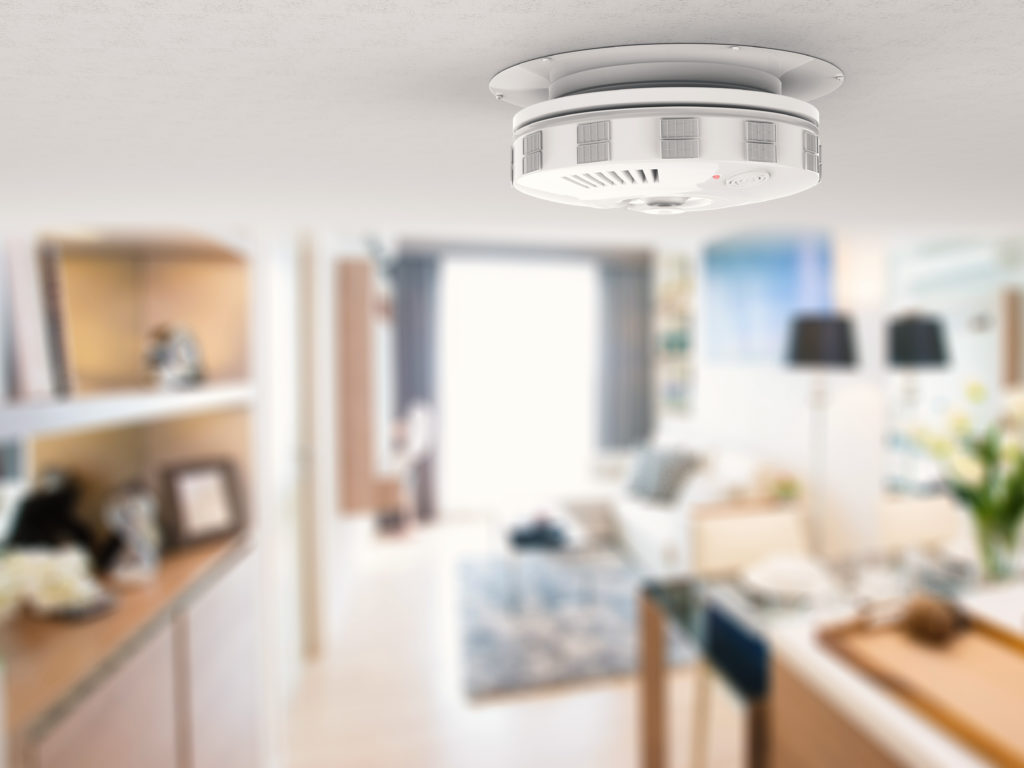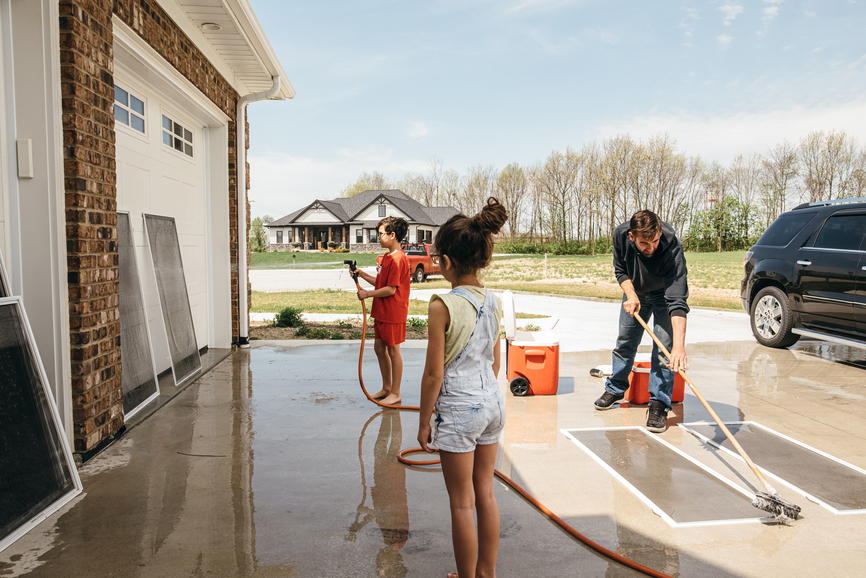Maintaining and caring for your home may seem intimidating at times, especially if you are new to or exploring home ownership.
Owning a new home under warranty is a definite perk, but it is still important to understand that neglecting the maintenance of your home can void or impact the level of coverage.
Regardless of your home being warranted or not, learning to inspect and protect your investment will help keep your house in optimal condition, while potentially sparing you from costly repairs and grief.
Now that the birds are chirping, the ground has begun to thaw and those last signs of winter have passed, we must begin to assess potential winter damage and prepare for the warmer spring months ahead. Whether your schedule allows you to tackle everything at once or chip away at items when you have a chance, it’s important to follow a regular home maintenance routine.
Use our Spring Home Maintenance Checklist to ensure your home is in top-notch shape from the inside, out. And take these tips to go – you can download our printable checklist at the end of this article.

Interior Spring Home Maintenance Checklist
1. Check Hot Water Tank
After consulting your hot water tank owners’ manual, carefully test the temperature and pressure relief valve. Review the timetable and instructions for draining several gallons of water from the bottom of the water heater.
This can reduce buildup of mineral deposits, prolong the tank’s life and save energy dollars.
2. Inspect & Adjust Heating Systems

Adjust the vents and balance the system to meet your own family’s needs. If you have a SMART thermostat, adjust the temperature to receive energy savings. Replace furnace filters every three months to ensure your indoor air quality is clean. A clogged filter can slow air flow and cause cold spots in your home.
Although it takes only a few minutes to change, this is one of the most frequently overlooked details of normal furnace maintenance.
3. Inspect and Test A/C Unit
Switch on the power to your air conditioning, and check the system. Be sure to change the filters if required, and have the system serviced according to product guidelines.
4. Clean and Service Fireplace
If you have a gas fireplace, clean the inside of the glass with a fireplace glass cleaner. Failure to do so can cause the glass to permanently discolour. If the weather allows, shut off the pilot light during the warmer months.
You should have your fireplace serviced annually.
5. Test Devices

Check your home’s smoke/carbon monoxide detectors and security alarms. Make sure to test each unit in your home individually. If one is working, it does not mean they all are. Be sure to replace the batteries as required.
These devices should be checked at least twice a year.
6. Re-Caulk Showers and Countertops
Although it may make a tub, sink and shower impervious to water for an extended amount of time, caulking doesn’t last forever.
Over time, caulking can wear, crack, discolour and shrink, which can eventually lead to water damage. Assess the caulking around your fixtures, and re-caulk if necessary.
Exterior Spring Home Maintenance Checklist
1. Clean and Inspect Windows and Screens

Your home’s windows should be cleaned regularly, especially the inside tracks. Use a spray cleanser or soapy water with a soft cloth or paper towel. Be sure to remove the screens from your windows and clean the exterior areas at least once a year.
Keep the bottom window channels and weep holes free of dirt and debris for proper operation. Inspect the caulking around your windows, and re-caulk if necessary.
2. Check Weather-Stripping
Check the weather-stripping around your doors and windows for air infiltration. Ensure the seals are all adequate.
3. Reconnect Hoses
If your outdoor faucets are “frost-free”, your hose must be removed during the colder or freezing months. If a hose is left attached, the water that remains in the hose can freeze and expand back into the pipe causing a break in the line.
The outside hose should only be reconnected after all danger of frost has passed. Once connected, check the hose for holes or leaks.
4. Examine Foundation
Water damage is a home’s arch nemesis. Check your foundation walls for cracks, leaks or signs of moisture. You want to make sure there are no signs of it entering your home.
5. Check and Clean Sump Pump
It’s recommended that you maintain your sump pump once a year. Ensure the pump is operating properly before the spring thaw sets in.
6. Close Off Entry Points
Check for and seal off any holes in your exterior cladding that could be an entry point for small pests. Prevent them from getting in near corner posts by using steel wool pads or copper mesh to secure any gaps.
7. Clean Gutters and Downspouts

Check your eavestroughs, gutters and downspouts for loose joints and secure them. Clear any obstructions you find, and ensure water flows away from your home. Gutters should be checked for obstructions at least twice a year, after periods of freezing and thawing or heavy windstorms. Do not allow leaves and debris to clog the downpipes of your home, or you could have an expensive problem on your hands.
8. Inspect Exterior Caulking
Exterior caulking can help to keep heating and cooling bills down, by preventing heat loss around your doors and windows. Caulking used on the exterior of the house can seal up cracks in the home’s foundation and driveway that could lead to expensive repair bills if left unchecked.
Inspect your exterior caulking, and re-caulk if necessary.
9. Clean and Inspect Roof
Obstructions that prevent the free-flow of water off of the roof’s surface or to a drain can cause leakage and/or premature failure of the roofing material. Flashing must be kept free of debris and buildup.
Clean your roof annually and check it for excess debris. Trim the surrounding trees and branches that could impede the free-flow of water.
10. Lawn Maintenance
Aerating your lawn reduces soil compaction, and can greatly improve your grass quality. More air flow, water and nutrients will be absorbed into the lawn, enhancing your grass growth.
Rake up any lingering leaves, and overseed bare or thin spots on your lawn. Begin a spring routine of weeding, fertilizing, watering and mowing.
Get the list: Click to download your own PDF version of this Spring Home Maintenance Checklist.
Maintenance and New Home Warranties in B.C.
According to the Homeowner Protection Act and regulations, “new homes built in B.C. by licensed residential builders must be covered by mandatory, third-party home warranty insurance.”
If you own a home with home warranty insurance, you could limit or even void your coverage due to negligent or improper maintenance of your home.
In B.C., home warranty insurance on new homes includes a minimum of two years on labour and materials (some limits apply), five years on the building envelope, including water penetration, and ten years on structure.
Homeowners will find the BC Housing Residential Construction Performance Guide an extremely valuable resource when trying to determine whether or not a concern you have with your new home might be covered by their warranty insurance.
Understanding this distinction will help you gain a more realistic expectation about the performance of your new home, and help you self-evaluate possible defects.
By establishing good home maintenance practices, protecting your investment will become much more manageable. We hope that this Spring Home Maintenance Checklist helps you familiarize yourself with your home while creating a consistent maintenance routine.
If any of our tips go beyond your skill level or lead to more involved repairs, we strongly advise you to hire a professional to help.
Resources:
Follow Miracon on social media to get more tips like these.